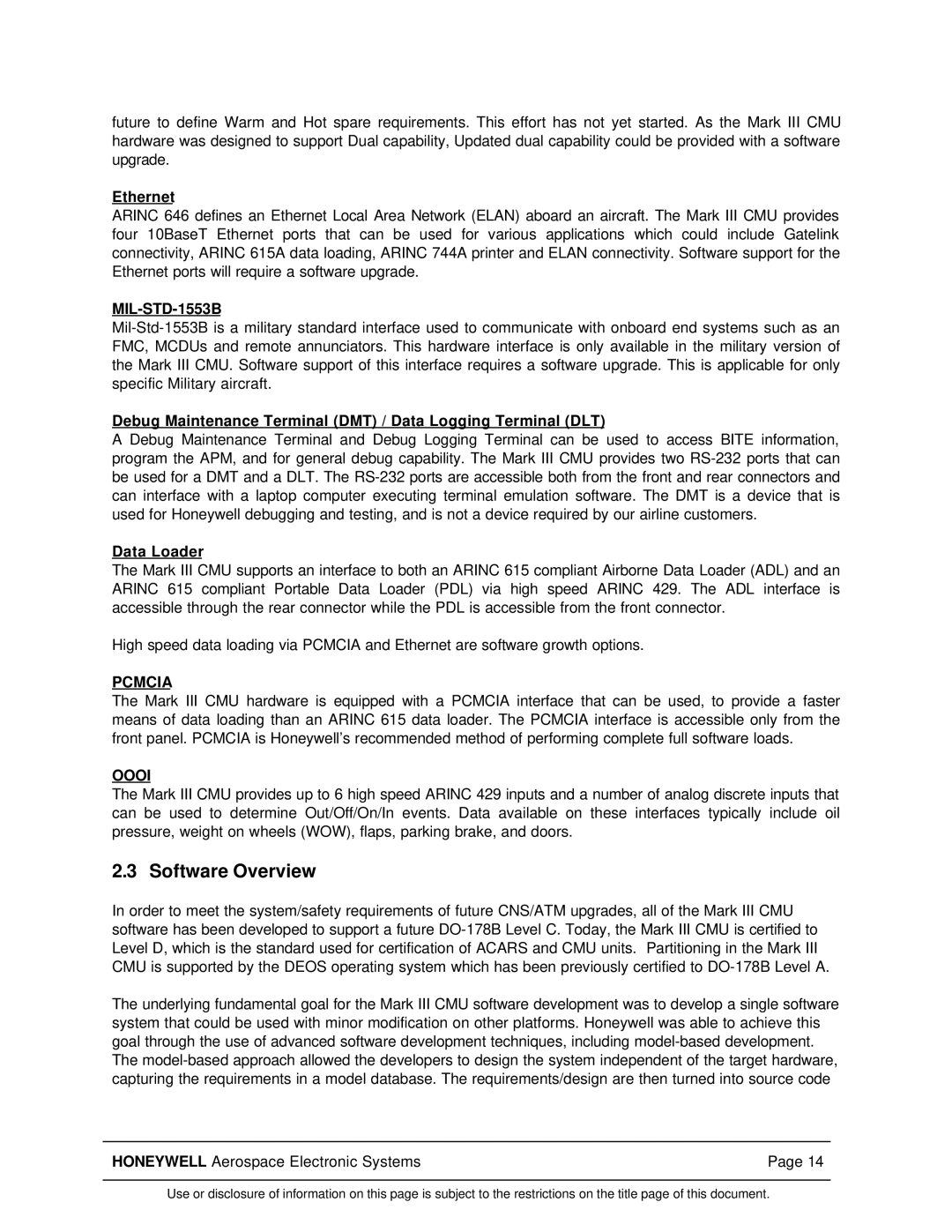future to define Warm and Hot spare requirements. This effort has not yet started. As the Mark III CMU hardware was designed to support Dual capability, Updated dual capability could be provided with a software upgrade.
Ethernet
ARINC 646 defines an Ethernet Local Area Network (ELAN) aboard an aircraft. The Mark III CMU provides four 10BaseT Ethernet ports that can be used for various applications which could include Gatelink connectivity, ARINC 615A data loading, ARINC 744A printer and ELAN connectivity. Software support for the Ethernet ports will require a software upgrade.
MIL-STD-1553B
Debug Maintenance Terminal (DMT) / Data Logging Terminal (DLT)
A Debug Maintenance Terminal and Debug Logging Terminal can be used to access BITE information, program the APM, and for general debug capability. The Mark III CMU provides two
Data Loader
The Mark III CMU supports an interface to both an ARINC 615 compliant Airborne Data Loader (ADL) and an ARINC 615 compliant Portable Data Loader (PDL) via high speed ARINC 429. The ADL interface is accessible through the rear connector while the PDL is accessible from the front connector.
High speed data loading via PCMCIA and Ethernet are software growth options.
PCMCIA
The Mark III CMU hardware is equipped with a PCMCIA interface that can be used, to provide a faster means of data loading than an ARINC 615 data loader. The PCMCIA interface is accessible only from the front panel. PCMCIA is Honeywell’s recommended method of performing complete full software loads.
OOOI
The Mark III CMU provides up to 6 high speed ARINC 429 inputs and a number of analog discrete inputs that can be used to determine Out/Off/On/In events. Data available on these interfaces typically include oil pressure, weight on wheels (WOW), flaps, parking brake, and doors.
2.3 Software Overview
In order to meet the system/safety requirements of future CNS/ATM upgrades, all of the Mark III CMU software has been developed to support a future
The underlying fundamental goal for the Mark III CMU software development was to develop a single software system that could be used with minor modification on other platforms. Honeywell was able to achieve this goal through the use of advanced software development techniques, including
HONEYWELL Aerospace Electronic Systems | Page 14 |
Use or disclosure of information on this page is subject to the restrictions on the title page of this document.
